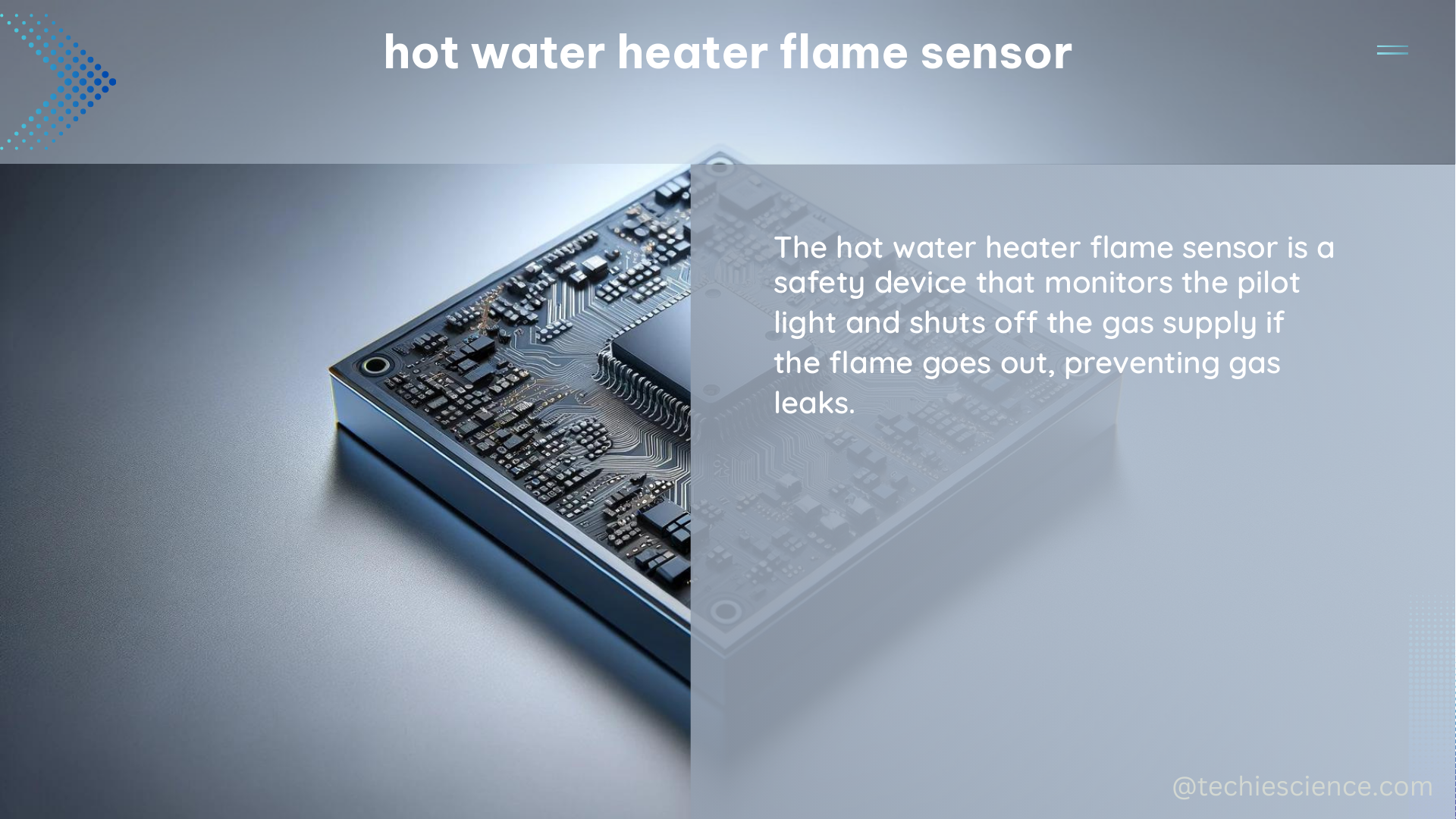The hot water heater flame sensor is a critical safety component in gas-powered water heaters, ensuring the burner is lit before gas is released. This feature prevents dangerous gas buildup and potential explosions, making it a vital part of the water heater’s operation.
Understanding the Flame Sensor’s Technical Specifications
Hot water heater flame sensors are designed with specific technical characteristics to ensure reliable and safe operation. These sensors are typically made of ceramic or metallic materials with high thermal conductivity and resistance to oxidation, allowing them to withstand the high temperatures of the burner flame.
Thermal Conductivity and Material Composition
The flame sensor’s material composition plays a crucial role in its performance. Commonly used materials include:
- Ceramics: Ceramic flame sensors, such as those made from alumina (Al2O3) or zirconia (ZrO2), have excellent thermal conductivity, typically ranging from 20 to 35 W/m·K. These materials can withstand temperatures up to 1,600°C (2,912°F).
- Metals: Metallic flame sensors, often made from nickel (Ni) or copper (Cu), have even higher thermal conductivity, typically between 50 to 400 W/m·K. These sensors can operate at temperatures up to 900°C (1,652°F).
The choice of material depends on the specific water heater model and the expected operating conditions, with ceramic sensors being more common in residential applications and metallic sensors used in commercial or industrial water heaters.
Operating Principle: The Seebeck Effect
Hot water heater flame sensors operate based on the Seebeck effect, a thermoelectric phenomenon. When the sensor is heated by the burner flame, it generates a small voltage, typically in the range of 20 to 30 millivolts (mV). This voltage is then interpreted by the water heater’s control board to determine the presence of the flame.
Resistance Characteristics
A crucial parameter for testing and maintaining the flame sensor is its resistance. A healthy flame sensor should have the following resistance characteristics:
- Cold Resistance: When the sensor is at room temperature, it should have a low resistance, typically in the range of 1 to 10 ohms (Ω).
- Heated Resistance: When the sensor is heated by the burner flame, its resistance should increase significantly, often reaching hundreds or even thousands of ohms.
If the sensor’s resistance does not change or remains too high, it may indicate a problem with the sensor and the need for replacement.
Temperature Range and Life Expectancy
Flame sensors are designed to operate within a specific temperature range, typically from ambient temperature up to around 700-900°C (1,292-1,652°F). This wide temperature range ensures the sensor can reliably detect the burner flame and provide the necessary safety function.
The expected life expectancy of a flame sensor can vary, but they generally last several years. However, factors such as oxidation, carbon buildup, or physical damage can lead to premature failure, necessitating replacement.
Maintaining and Testing the Flame Sensor

Proper maintenance and testing of the hot water heater flame sensor are crucial to ensure the water heater’s safe and efficient operation.
Cleaning and Inspection
Periodically, the flame sensor should be inspected and cleaned to remove any buildup of carbon or other deposits. This can be done by gently wiping the sensor with a soft cloth or using a small wire brush. Avoid using abrasive materials that could damage the sensor’s surface.
Resistance Testing
To test the flame sensor’s condition, you can use a multimeter to measure its resistance. Follow these steps:
- Disconnect the power to the water heater and turn off the gas supply.
- Locate the flame sensor, typically a rod or wire near the burner assembly.
- Use the multimeter to measure the resistance between the sensor’s two terminals.
- Compare the measured resistance to the expected values:
- Cold Resistance: 1 to 10 ohms
- Heated Resistance: Hundreds to thousands of ohms
- If the resistance does not change or is outside the expected range, the flame sensor may need replacement.
Replacement Procedure
If the flame sensor is found to be faulty, it will need to be replaced. Consult the water heater’s manufacturer instructions for the specific replacement procedure, as it may vary depending on the model. Generally, the steps involve:
- Turning off the power and gas supply to the water heater.
- Carefully removing the old flame sensor, taking note of its orientation and connections.
- Installing the new flame sensor, ensuring it is properly positioned and securely connected.
- Restoring power and gas supply, and testing the new sensor’s operation.
Conclusion
The hot water heater flame sensor is a critical safety component that plays a vital role in the safe operation of gas-powered water heaters. Understanding its technical specifications, maintenance requirements, and testing procedures can help homeowners and technicians ensure their water heaters are functioning properly and safely.
By following the guidelines outlined in this comprehensive guide, you can effectively maintain and troubleshoot the flame sensor, contributing to the longevity and reliable performance of your hot water heater.
References
- Thermal Conductivity of Ceramics
- Thermal Conductivity of Metals
- Seebeck Effect Explanation
- Flame Sensor Resistance Testing
- Water Heater Flame Sensor Replacement

The lambdageeks.com Core SME Team is a group of experienced subject matter experts from diverse scientific and technical fields including Physics, Chemistry, Technology,Electronics & Electrical Engineering, Automotive, Mechanical Engineering. Our team collaborates to create high-quality, well-researched articles on a wide range of science and technology topics for the lambdageeks.com website.
All Our Senior SME are having more than 7 Years of experience in the respective fields . They are either Working Industry Professionals or assocaited With different Universities. Refer Our Authors Page to get to know About our Core SMEs.